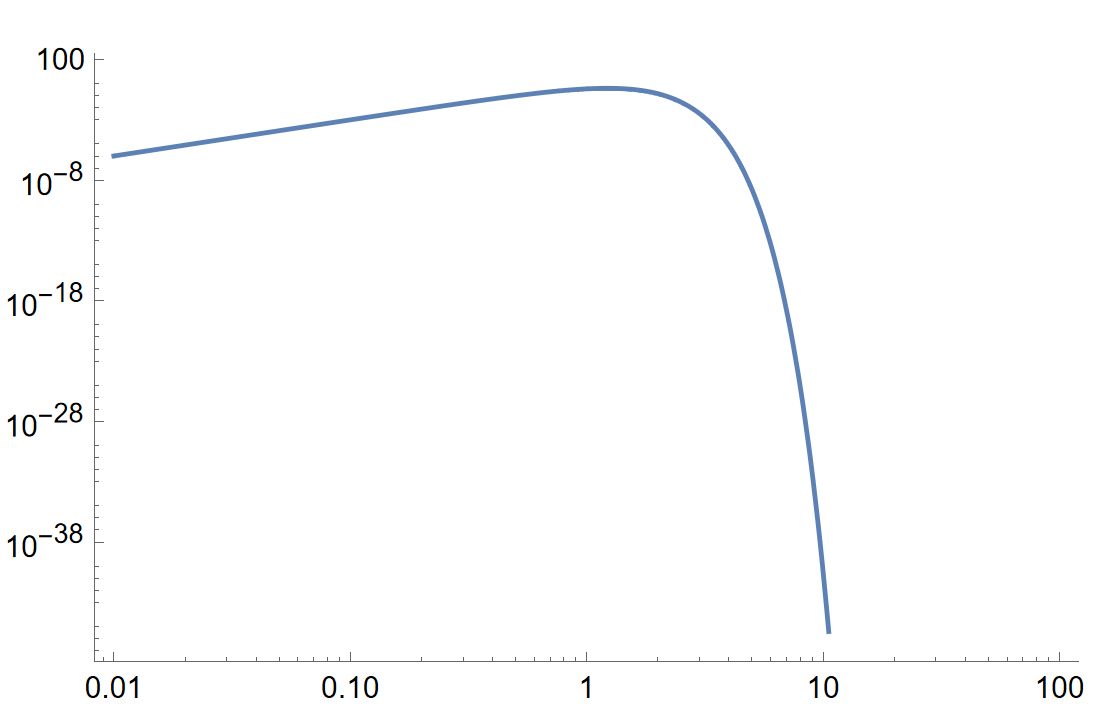Consider the following test function:
func[x_] = x^3 Exp[-x^2]; In general, it may be an arbitrary function without e.g. extrema.
I want to plot it:
LogLogPlot[func[x], {x, 0.01, 100}] Due to the exponential decrease, the automatic PlotRange is down to a very small values.
I want to cut it from below by say 10^-15, but also to adjust the maximal value such that it would correspond to say 1.5*Max[func[x]]. The only thing I know is to use PlotRange:
LogLogPlot[func[x], {x, 0.01, 100}, PlotRange -> {All, {10^-15, 2}}] However, the second argument in {10^-15,2} is added by hand. Could you please tell me whether it is possible to make its evaluation automatic depending on the needs?


NMaxValue[func[x], x]and an appropriate multiplier.$\endgroup$